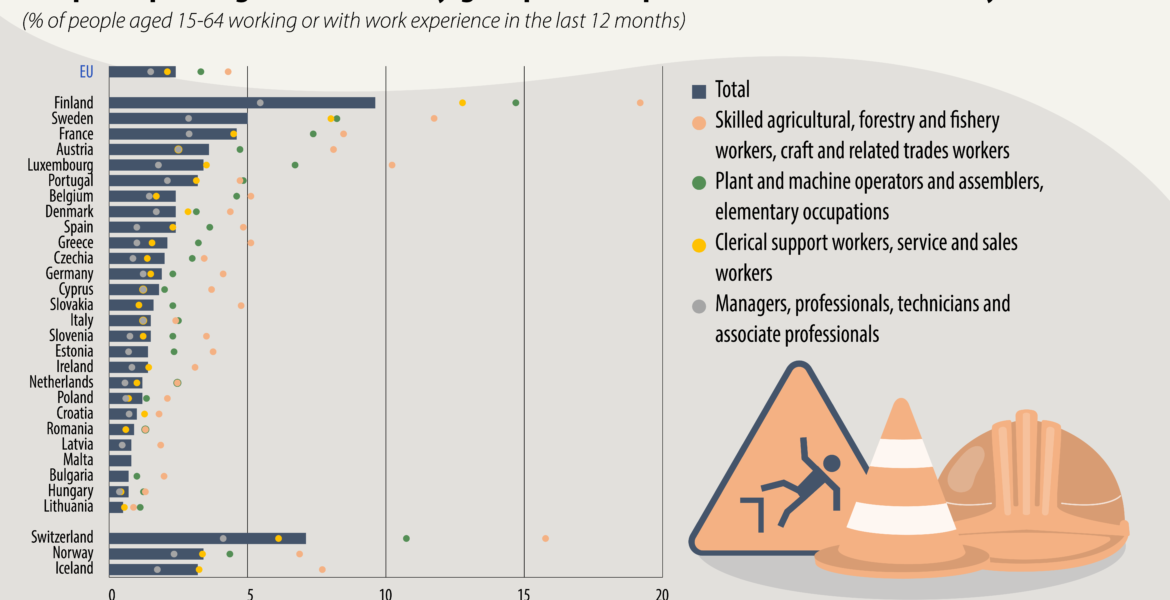Recent data published by Eurostat indicated that nearly half (44.6%) of employed people in the EU aged 15-64 reported facing risk factors for their mental well-being at work.
Sweden (76.4%), Greece (69.1%) and Luxembourg (67.4%) held the highest values, while Czechia (33.8%), Lithuania (26.7%) and Germany (25.8%) held the lowest shares.
In 2020, 2.4% of the people employed or those not employed but who had worked during the year before the interview in the EU reported at least one accident at work in the previous 12 months, a significantly lower share than 2.8% recorded in 2013, which can be partly due to the COVID-19 pandemic. This information comes from data published by Eurostat today on accidents at work and work-related health problems from the EU Labour Force Survey (EU-LFS) ad-hoc module.

The occupational category with the highest share of people reporting an accident at work at EU level in 2020 was the craft and related trades workers (4.4%), followed by the plant and machine operators and assemblers and the skilled agricultural and fishery workers (both 3.4%). People with elementary occupations (3.3%) also recorded a share exceeding 3% in 2020.
At a national level, the broad group of skilled agricultural, forestry and fishery workers, craft and related trades workers recorded the highest share of people reporting an accident in 15 out of 18 EU Member States for which data is available for all groups. Focusing only on this occupational group, the highest shares of people reporting an accident were recorded in Finland (19.1%), Sweden (11.7%) and Luxembourg (10.2%). By contrast, shares below 2% were found in Latvia, Croatia, Romania, Hungary and Lithuania.
Tiring or painful positions were the most common physical risk factor at work
For 13.2% of the workers at the EU level, tiring or painful positions were the most serious risk factor for their physical health at work. This was followed by activities involving strong visual concentration (10.0%), handling of heavy loads (9.1%) and repetitive hand or arm movements (8.7%).

Tiring or painful positions were more commonly seen as a risk by women than men (14.5% vs. 12.2%). The same pattern can be seen for repetitive movements, which was declared as the most serious physical risk factor by 10.8% of women against 7.0% of men.
The largest gender gap was observed in the use of machines or hand tools and vehicles, as 10.3% of men deemed it the most serious risk factor at work compared with 2.4% of women.


